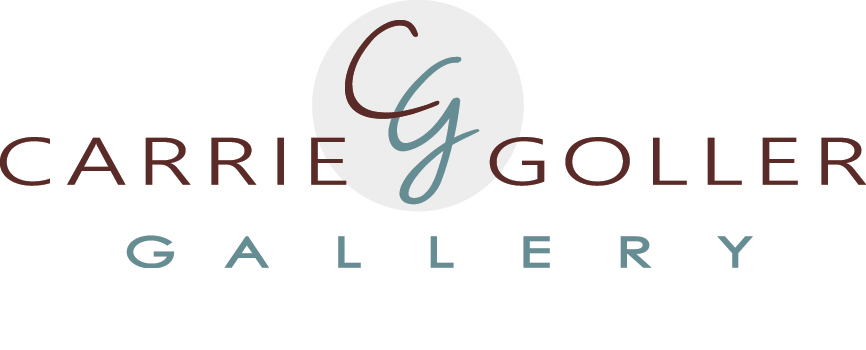Prints available, original ***SOLD*** CARRIE GOLLER - Smoke Signals, encaustic/mixed media 48x48
Prints available, original ***SOLD*** CARRIE GOLLER - Smoke Signals, encaustic/mixed media 48x48
Part of the artist's new Organic Modern series - textural encaustic with mixed media such as earth pigments, tar and rust on 1.5” profile (edges stained dark brown), cradled wooden “box” support. Ready to hang. No framing in necessary with this contemporary piece, but framing may be added if desired.
Inspiration?
One of my favorite collectors asked to know more about the story and inspiration for this painting. I often don't know where inspiration comes from until afterward. I once created an entire series of birds and nests (there were lots of tears in those nests) and later realized it was about motherhood and the sometimes painful transitions of letting go. Isn't motherhood a series of goodbyes as children grow up? Goodbye Winnie the Pooh, goodbye helping to lace little shoes, goodbye Legos everywhere, goodbye to long talks while driving them places, etc... Childhood is so precious and fleeting.
Well back to this piece ... exploring new directions in my art is joyful and exciting, sometimes I lose sleep dreaming up new ideas and it is difficult to wait to get into the studio. This latest series I call Organic Modern and this is the first piece in the series, an abstracted composition incorporating mostly organic or natural elements with encaustic (beeswax and damar resin). I plan to feature combinations of earth pigments with some subtle elements of rust, tar, charcoal, ash, micah, oyster shell, sand, wood shavings, string, leaves, bits of bark or paper. Inspiration - Childhood summers on Bainbridge Island were often spent camping in our little teardrop trailer with a group of ten or so Island families just a few miles away at Fay Bainbridge. Our fathers commuted to their jobs, and we all took the occasional at-home break now and then. It was a carefree time of combing treacherous trails, riding bikes on the sandspit, fishing derbies and salmon bakes, clam digging and log hopping; friends and neighboring campers, or the ranger popping by for a chat and coffee and there were daily visits to Dickie Johnson at the SnackShack for pixie sticks or ice cream. To this day the smell of a campfire brings back warm memories. In our region, an outdoor fire area can mean the difference between staying inside or venturing outdoors for a cozy chat. My husband is a gentle person who also loves a fire and we have a long-standing tradition. When he wants some time to talk together he does not say anything. Instead he sends me "smoke signals" by lighting a fire in our giant iron fire bowl and sits patiently outside by the canal with a seltzer or cup of cocoa until I notice and join him. There is no fancy furniture, it is all weathered adirondack or beachy furniture, simple and functional with rusted nail logs and driftwood here and there, which reminds me of my childhood spent climbing the beach until a crackling fire nearby called us back to base camp for the evening. I believe this particular piece was inspired by childhood memories of camping and campfires. Our iron fire bowl commissioned from Bainbridge artist Dick Strom has rusted beautifully over the years and I scraped rust from it for this painting. I have thought of many names for this piece - but now I think the right name has just occurred to me - Smoke Signals. Thank you A for your encouragement and thank you for asking!
WHAT IS ENCAUSTIC?
First used by the Greeks over 2000 years ago, encaustic (beeswax medium) is one of the earliest known forms of painting. The amazing Fayum Mummy Portraits painted with encaustic by the Greeks in Egypt, (late 1st century BCE or the early 1st century CE) are still fresh, vibrant, and exhibited today in the world's greatest museums. Artist Jasper Johns is credited with the modern renaissance of encaustic fine art with his work that began in the 1950's.
Painting with encaustic involves melting, applying, then heat fusing layers of beeswax mixed with various mediums. The technique generates a luminous, rich surface that brings visual beauty and depth to the wax. Back from obscurity, modern tools have made the process more practical for encaustic artistry. The protective nature of the beeswax helps maintain freshness and preservation of color, preventing the wax from darkening or turning yellow. Impervious to moisture, these pieces need not be varnished or put under glass.
Carrie Goller interprets this ancient medium into contemporary works. Illuminated in brilliant color or delicate opalescence, her compositions encompass oversized serene seascapes & landscapes, to tiny whimsical country scenes. Goller states, "I do not consider myself an 'encaustic artist', although I have instructed and work in that method. I am an artist that works in a variety of media; encaustic just happens to be one of them. The idea and expression of the work inspires me more than the technique itself."





